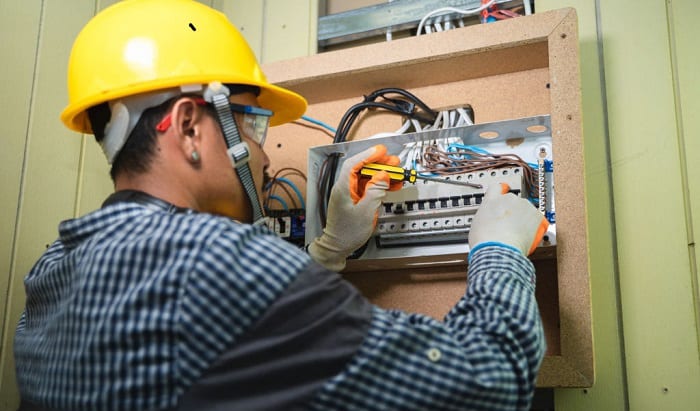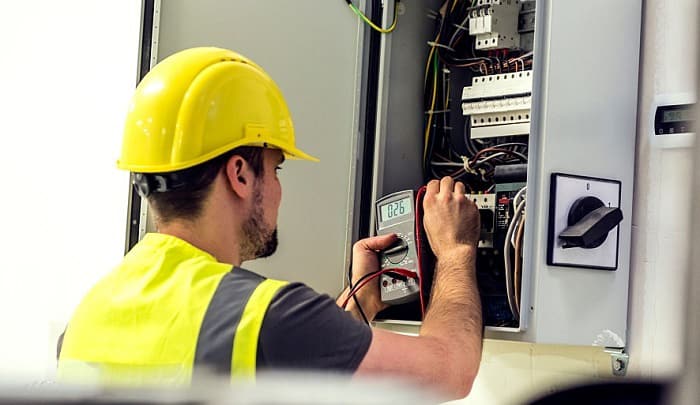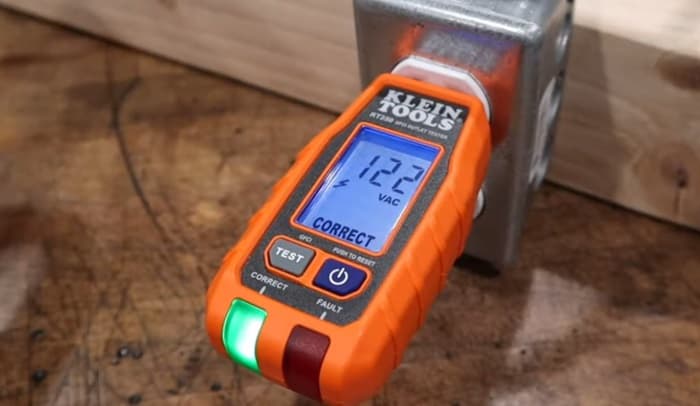Learning how to test AFCI/ GFCI breakers can be extremely beneficial if your home relies on these types of breakers and outlets. However, the right technical information on how to do so can be hard to acquire, especially if you can’t confirm its source.
This is why I’ve laid out how most professional electricians go about with a GFCI and AFCI test in this guide. These are fairly straightforward steps that include using a GFCI tester and AFCI tester as well as components that are already integrated into the said breakers and outlets. They’re completely safe and won’t require additional equipment to prevent electrical accidents.
Table of Contents
You’ll Only Need the Following Before Starting
Any applicable AFCI tester or GFCI tester or a tester that can handle both
In most cases, you can rely on the test button on a breaker to determine whether it’s still fulfilling its function (i.e. being able to trip when necessary). The button is reliable on its own, so I recommend it to anyone who wishes to test GFCI and AFCI breakers and outlets.
If you have time or want to do a more thorough test, then I suggest you use a tester. The ones made by Klein are often reliable and considerably more convenient because of their built-in features. Most even allow you to test both AFCI and GFCI outlets and breakers.
On the whole, I don’t favor one test over the other as both are great enough as they are. I leave it up to you to decide which one is more efficient and effective for you.
Testing Using the Test and Reset Buttons
I won’t bother differentiating between a breaker or an outlet when doing this kind of test because they’re pretty much similar. I’ll just lay out how each one typically goes about based on whether they’re GFCI or AFCI. Let’s start with an AFCI breaker and outlet. If you only have a GFCI one, then please skip to the tutorial about it in the next section.
- Step 1. Leave at least one appliance or a device running in the circuit connected to the AFCI. Go to the panel with the AFCI breaker or any outlet you wish to test then press the test button.
You don’t even have to turn anything off. Just make sure you have an appliance that’s running that’s also included in the circuit connected to the AFCI. With that out of the way, you can now head to your panel.
I’m assuming the breaker is already turned on. Otherwise, if it’s just freshly installed, turn it on now. Afterward, look for the arc fault breaker test button then simply press it. Once the breaker trips or turns off by itself, you’ll know it’s functioning in tip-top shape.
Important Note: If the breaker doesn’t trip at this point, that’s never a good sign because you’re possibly dealing with a broken breaker. Don’t ignore this because your property is essentially vulnerable to fires without a working AFCI breaker. Please consider calling an electrician ASAP if this is the case.
- Step 2. If everything’s fine, you can now reset the breaker/s and outlets.
Since it essentially “tripped”, you’ll need to reset the breaker. You just have to turn it off then back on, assuming it doesn’t have a built-in reset functionality. You may do this test on a monthly basis or if you suspect issues in your AFCI breaker or outlet.
To test a GFCI breaker using the said buttons, follow these steps. They’re relatively more straightforward than an AFCI test.
- Step 1. Go to the GFCI breaker or outlet then press the test button. Check whether either one trips properly.
You don’t have to turn any appliance on or off; in fact, it’s better to leave everything running. Just head to your panel with the GFCI breaker then press its test button. Assuming it’s in working condition, it should trip and shut down the flow of the electricity in all circuits connected to it.
If you want to double-check, go ahead and visit rooms with appliances and light switches to check whether they’re no longer running. You may even plug new devices on outlets.
I know I didn’t directly mention it in the tools, but if you have a voltmeter, feel free to use it now to check for the presence of voltage.
- Step 2. Reset the breaker/s or outlets.
Everything in good working order? You can now turn the breaker back on by resetting it. Most modern breakers let you do this with a simple click of a button, usually labeled as “Reset”.
Sometimes, I do this gradually, especially if I feel I need to be extra safe. I even unplug the appliances first before resetting then slowly plug them on, especially if I’m already encountering circuit overloads. But, of course, that’s only if I’m having doubts about a particular wiring setup, which is rarely the case.
If the GFCI breaker or outlet didn’t trip, that’s an immediate cause for concern and should be looked at by an electrician. You may want to consider not running any appliance whose circuit is connected to the GFCI breaker until the issue has been resolved.
Using a GFCI/AFCI Tester
If you only have a GFCI breaker or AFCI breaker, you may need a tester that works only for the particular type of breaker or outlet you own. Otherwise, there are testers out there, especially the one made by Klein that lets you test both.
The Klein RT-310, which I own, is a good example. It’s labeled as an AFCI tester, but it can actually test GFCI breakers, too. I love these kinds of testers because they’re able to simulate conditions like ground faults and arc faults (i.e. cause amperage spikes), which are pertinent to GFCI and AFCI breakers respectively.
I’m not joking when I say they’re very easy to use. What’s equally neat is that it even indicates whether your wirings are still safe and sound.
- You only need to plug the tester on the outlet connected to AFCI or GFCI (or both) breaker. Afterward, press either the “GFCI” or “AFCI” button to perform the said simulations.
- If you press the GFCI button, the GFCI breaker should trip. The same goes for its AFCI counter
I leave it up to you how you’re going to use the tester since it’s pretty uncomplicated to get the hang of. If you want to see a live demonstration of how to use a handy tester such as the ones by Klein, then please watch the following video. It explains the tester’s functionalities in more detail so it’s worth viewing it.
Conclusion
So what’s your opinion on my little guide on how to test AFCI/ GFCI breakers? I’d like to hear your thoughts about it, so please take the time to comment below.
I recommend either of the two testing methods or even both if you have the time. They’re tests designed by the actual designers and manufacturers of these breakers, after all. Many professional electricians also vouch for them. If you found this guide useful, please share it as well! Thank you!

I am Edwin Jones, in charge of designing content for Galvinpower. I aspire to use my experiences in marketing to create reliable and necessary information to help our readers. It has been fun to work with Andrew and apply his incredible knowledge to our content.




